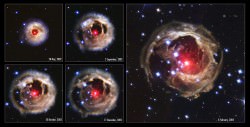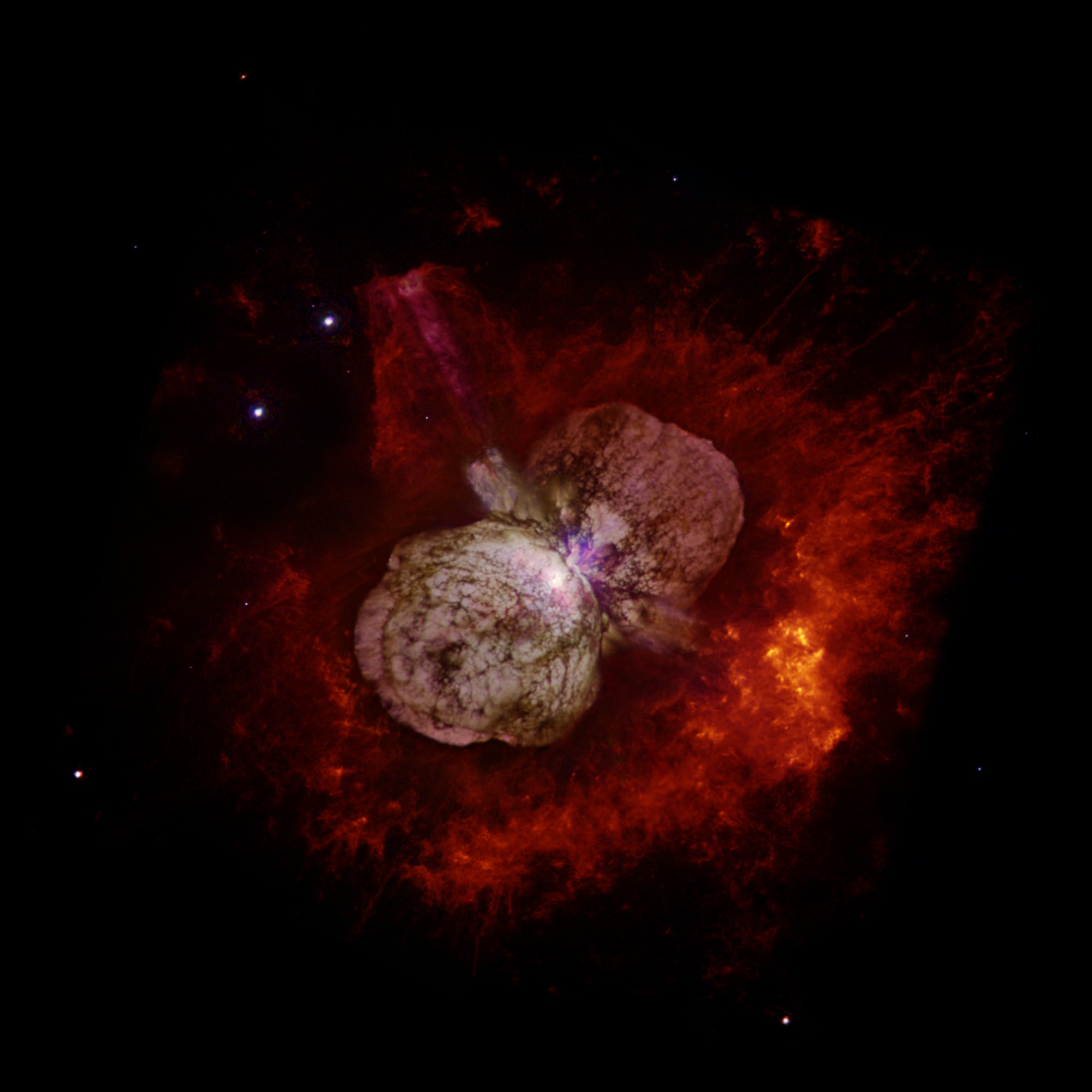[/caption]
During the mid 1800’s, the well known star η Carinae underwent an enormous eruption becoming for a time, the second brightest star in the sky. Although astronomers at the time did not yet have the technology to study one of the largest eruptions in recent history in depth, astronomers from the Space Telescope Science Institute recently discovered that light echoes are just now reaching us. This discovery allows astronomers to use modern instruments to study η Carinae as it was between 1838 and 1858 when it underwent its Great Eruption.

The reflected light has its properties changed by the motion of the material off which it reflects. In particular, the light shows a notable blueshift, telling astronomers that the material itself is traveling 210 km/sec. This observation fits with theoretical predictions of eruptions similar to the type η Carinae is thought to have undergone. However, the light echo has also highlighted some discrepancies between expectation and observation.
Typically, η Carinae’s eruption is classified as a “supernova impostor”. This title is fitting since the eruptions create a large change in the overall brightness. However, although these events may release 10% of the total energy of a typical supernova or more, the star remains intact. The main model to explain such eruptions is that a sudden increase in the star’s energy output causes some of the outer layers to be blown off in an opaque wind. This shell of material is so thick, that it gives a large increase in the effective surface area from which light is emitted, thereby increasing the overall brightness.
However, for this to happen, models predict that the temperature of the star prior to the eruption needs to be at least 7,000 K. Analyzing the reflected light from the eruption places the temperature of η Carinae at the time of the eruption at a much lower 5,000 K. This would suggest that the favored model for such events is incorrect and that another model, involving an energetic blast was (a mini-supernova), may be the true culprit, at least in η Carinae’s case.
Yet this observation is somewhat at odds with observations made in the years following the eruption. As spectrography came into use, astronomers in 1870 visually noticed emission lines in the star’s spectrum which is more typical in hotter stars. In 1890, η Carinae had a smaller eruption and a photographic spectrum put the temperature around 6,000 K. While this may not accurately reflect the case of the Great Eruption, it is still puzzling how the star’s temperature could change so quickly and may also indicate that the favored model of the opaque-wind model is a better fit for later times or the smaller eruption, which would suggest two different mechanisms causing similar results in the same object on short timescales.
Either way, η Carinae is a marvelous object. The team has also identified several other areas in the shell surrounding the star which appear to be brightening and undergoing their own echoes which the team promises to continue to observe which would allow them to verify their findings.


Eta Carinae has,or so I understand, been discovered to be a binary star with a Wolf-Rayet componet and a blue hypergiant one with 60 & 80 solar masses respectively. (Source : Kaler’s Stars website.) Puzzling low temp result. Will be fascinating to see what further develops as we learn more from this over time as these light echoes evolve.
Yes, these temp readings comes as a bit of surprise to me aswell.
But when we observe WR or LBV stars (and here it seems we have both), we are observing them through the dense wind that they are expelling, and rarely the star(s) themselves, and if the wind is dense enough we will really just observe a humongous lowdensity and lowtemperature bubble. The hot stars are effectively shielded from our view.
I suspect this is the case here.
I must brush up on my Greek alphabet past epsilon, I suspected it was eta Carinae but I had to look it up.
This is such a fascinating object! Interesting article. My question is how large is that shell?